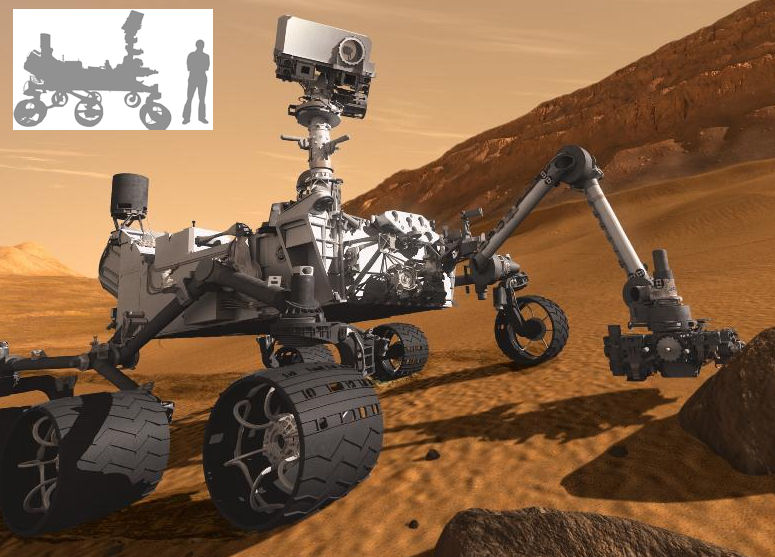|
and DOE. The mobile instrument platform, which is too large to rely on solar-powered batteries, contains a plutonium oxide-powered generator, as do all of NASA's deep-space probes such as Voyager and Cassini. %0d%0dFor more information, see: http://www.ornl.gov/info/press_releases/get_feature.cfm?FeatureNumber=f20111128-00."> |
|
||||
| and DOE. The mobile instrument platform, which is too large to rely on solar-powered batteries, contains a plutonium oxide-powered generator, as do all of NASA's deep-space probes such as Voyager and Cassini. &topic=general_sciences"> |
|||||
Feature |
Mars 'Curiosity' has ORNL tech

| |
Curiosity will explore Mars under Pu power. (Image courtesy of NASA)
(hi-res image) | |
The Curiosity rover that was launched toward Mars over the Thanksgiving holiday includes a significant contribution from ORNL and DOE. The mobile instrument platform, which is too large to rely on solar-powered batteries, contains a plutonium oxide-powered generator, as do all of NASA's deep-space probes such as Voyager and Cassini.
Radioisotope Power Systems program manager James King explains this chapter in ORNL's longstanding role in NASA's deep-space exploration:
"We did have a role in the Mars Science Lab. We produced the iridium alloys, clad vent sets for the Pu-238 fuel containment, and the Carbon Bonded Carbon Fiber insulator sets used in the generator. This is the first launch using a new radioisotope thermoelectric generator, the Multi-Mission Radioisotope Thermoelectric Generator.
"ORNL has been involved with the development of this generator for several years. In addition to the component production, we conducted several materials characterization and testing studies to support the design and safety analyses activities. The iridium alloy was tested in temperature ranges applicable to this system to insure adequate ductility was available for the safe containment of the fuel during accident conditions. Also, an extensive generator insulation material testing program was performed to insure adequate performance during operation. Materials and fabrication support consultation was provided to program participants as the generator was developed."
DOE's Idaho National Laboratory assembled and extensively tested the power system.
King notes that the real payoff comes later this year when the probe reaches Mars.
"We put a lot of effort into this generator and are very excited about the successful launch of the Mars Science Lab," he says. "The next difficult part of the mission is the actual landing of Curiosity on Mars next August. This will be followed by the actual operation of the rover conducting scientific experiments over the next two Earth years which is one Mars year."— Bill Cabage, Nov. 28, 2011


